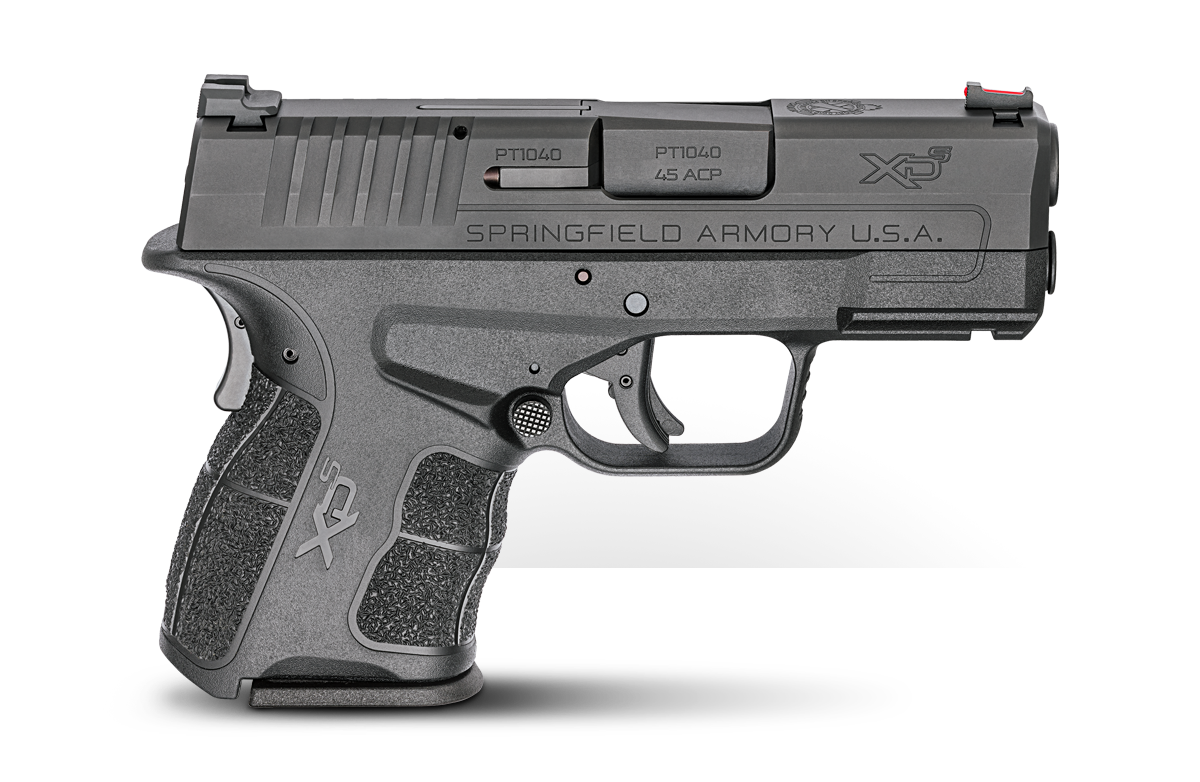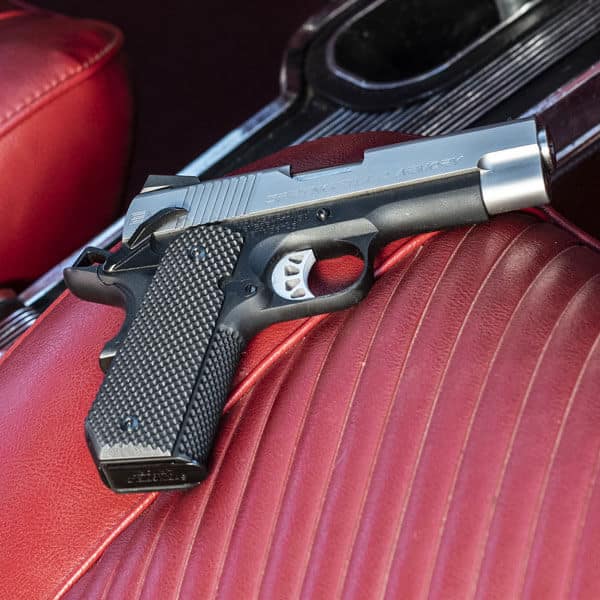Concealment Considerations: Choosing Your Carry Method
July 20th, 2019
5 minute read
Choosing how to carry your concealed pistol is kind of like choosing a favorite movie. There are certainly a number of movies that could be your favorite and many reasons why you might pick that movie. Your buddy also has a favorite and can tell you all the reasons that his movie is better than yours.
This is exactly how the discussion on the best way to carry a concealed pistol goes. Person A likes this or that, while Person B does not agree with Person A’s logic and prefers something completely different.
Carrying your pistol concealed is definitely not a one-size-fits-all decision.
So, what are the best ways to carry concealed? Well, that depends on what gun you choose to carry, how you are planning to dress and what kind of activities you intend to engage in while carrying.
Pistol Preference
The first decision to make is what gun you are going to carry, and again, we all have our personal preferences. Gun make and model may dictate how you concealed carry.
It would be difficult to carry your full-size 1911 TRP Operator with a full-length accessory rail and an attached, pistol-mounted light on your ankle, under your skinny jeans.
I have chosen the XD-S 3.3″ as my primary carry gun and consider it to be one of the most versatile pistols for concealment. I can use virtually any concealment technique with this pistol, as it is has both a short barrel and a short, thin grip, but it is still very shootable.
Clothing Choice
What are you going wear? This also has a major impact on what concealment technique you are using. Knee-high black socks and your 1970s pro basketball short shorts, though a good look, are definitely not the best combination for a thigh holster.
If you are wearing a polo shirt and slacks, you will likely choose a different concealment technique than you will If you are just in a casual pair of cargo shorts and a t-shirt. I have, on more than one occasion, changed my clothes just to accommodate being able to conceal my pistol better.
Daily Drill
What activities do you plan to do? Will you be sitting at a desk all day, at the movies, or out to dinner? Or will you be on your feet and moving around a lot?
The dynamics of your body movement have a significant impact on how well you can keep your pistol concealed.
For example; when my son was younger, I learned that it was really hard to keep my pistol concealed under my loose fitting shirt while playing catch. Every time I would throw the ball or extend my arm and jump for a higher throw, my inside-the-waistband pistol would be exposed.
I worked really hard to ensure that my concealed pistol was always just that, concealed. The idea was always for others to have no idea that I was armed – even if that meant changing concealed carry techniques at some point throughout the day.
Techniques to Try
Don’t limit yourself to trying just one potential technique for concealed carry – you’ve got plenty of options:
- Inside-the-Waistband (IWB) Holster – I believe this option is the concealment technique that offers the most versatility. It allows the gun to be carried strong side, appendix, in the small of the back or cross draw, depending on your preference.
When practiced, this technique can offer the fastest draw. Generally, the gun is more stable and requires less hand/arm movement to get to it. Another great attribute to carrying the gun inside the waistband is the ease of retaining the gun. The gun is in a position that allows the carrier to hold the gun in place while running, fighting or even while trying to prevent someone from taking the gun out of the holster.
Additionally, there are holsters that allow you to carry the gun under your shirt while the shirt is untucked, while other holsters allow you to carry the gun with the shirt tucked in. This gives you options for both casual and professional attire.
On the downside, I have started buying pants with waist sizes that are larger than my actual size – typically one size bigger. This gives me enough room to comfortably fit both the pistol and the holster but still provides me the ability to wear the same clothes if I ever decide not to carry the gun. Although some can pull it off with their traditional sizes, I have just found it to be a little too tight to be comfortable for long periods of time. - Ankle Holster – This method was once reserved for the small revolver. But now that semi-automatic pistols have become smaller, lighter, and thinner, it is a much more feasible option for other pistols. This technique seems to be best for those who are not super active or do not have any other option. The ankle holster is a great option for carrying a concealed pistol when wearing dress slacks or loose-fitting jeans.
I know many people who wear their pistols on their ankles for full 10-hour days and love it. They find it both convenient and comfortable. However, it is not for everyone. I really like the idea of the ankle holster, and I have tried time and time again to get it to work for me, but could never pull it off. It’s just not comfortable to me.
Aside from comfort, in my opinion, it is also one of the slower techniques for drawing the gun from concealment. Draw speed is not always something that is a concern to some gun carriers, but it’s an important factor for me. - Pocket Carry – Another technique that I see regaining popularity is pocket carry. However, unlike what I have seen in the past with revolver carry, I see people wising up and using holsters that fit in their pockets. This holster does double duty: (1) It protects the trigger, reducing the likelihood of anything getting into the trigger guard and accidentally firing the gun while it is in your pocket, and (2) it reduces the print (or the outline) of the gun through your pocket, but also requires that you have some larger pockets.
- Bag – I once thought of bag carry as an option best suited for women. But I am beginning to come around to some of the bag benefits. The reason being, most women carry a purse or some type of bag with them all the time and have been doing so most of their lives. Because they are accustomed to this, they are much less likely to leave the bag (with a gun in it) laying around. Leaving the bag behind with a gun in it could be disastrous, which is the main reason I traditionally avoid this technique.
However, I see more and more people carrying bags around with them now – mostly backpacks. I attribute this to staying “connected” (email, social media, web browsing) and people wanting to bring their tablets or laptops with them wherever they are going. A backpack or a small computer bag is a great way to bring your tablet and your pistol – that is, if you are responsible enough not to leave it behind. - CamelBak – Lastly, I have used my CamelBak on several occasions to store both my pistol and holster when I have been out running, hiking or biking. I sure like the added peace of mind of having the pistol with me when out in an unfamiliar or remote area, where the CamelBak fits right in.
Questions to Ask
Here is a short list of things to consider when choosing a concealment technique:
- Concealability – Is the gun hidden from view?
- Safety –Does this carry technique provide a safe way for you to carry the gun?
- Comfort – Can you comfortably wear the gun for several hours?
- Ease of access – Can you get to the gun in an acceptable time frame?
- Retention – Will the gun be safely retained in the holster, especially during some type of rigorous activity?
- Re-holstering – Can you safely re-holster the gun?
- Clothing – Will your clothing allow for the carry method you have chosen?
- Mobility – Does the carry technique interfere with your mobility? If so, be prepared to deal with it.
Practice is a Prerequisite
Regardless of your reasoning for choosing one carry method over the other, you should be well practiced.
Use your unloaded gun to practice drawing and holstering from your concealment position. Try getting in and out of your car or simulating whatever activity you plan to do while carrying the gun. Practice this repeatedly with the unloaded gun until you are confident you can safely carry and manipulate the gun.
Additionally, I would encourage you to go through this learning process for several carry techniques. The technique you like today may not be the same technique you want to use tomorrow under different circumstances.
Join the Discussion
Featured in this article
Continue Reading
Did you enjoy this article?

 125
125







